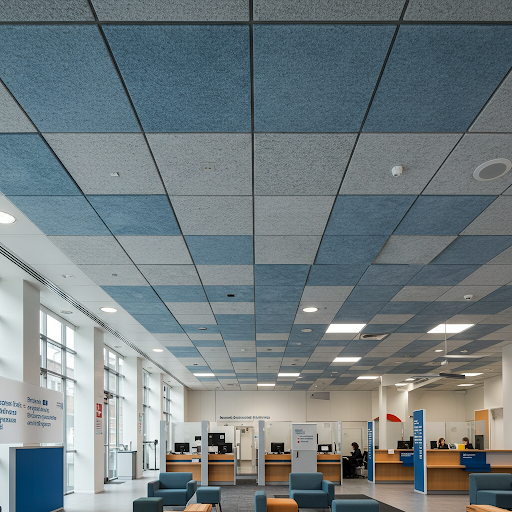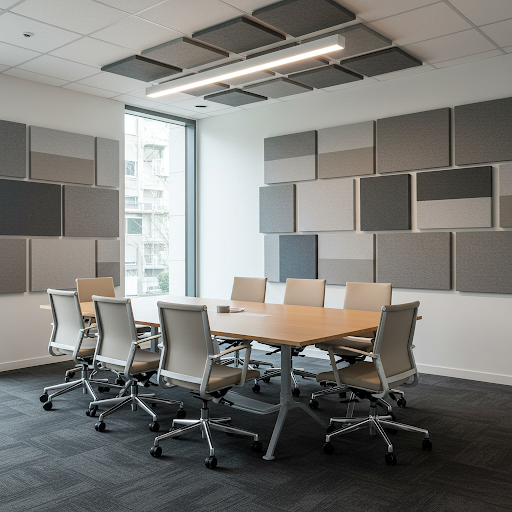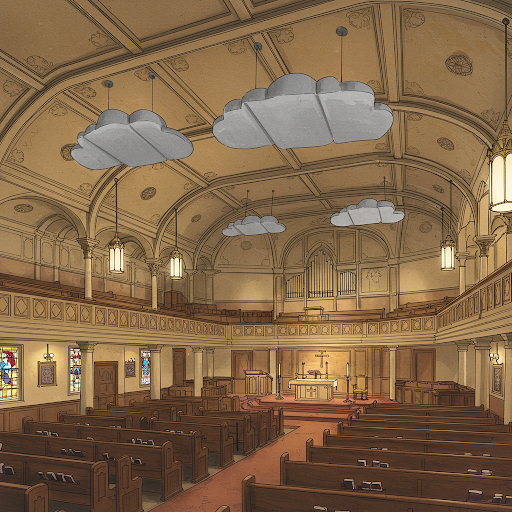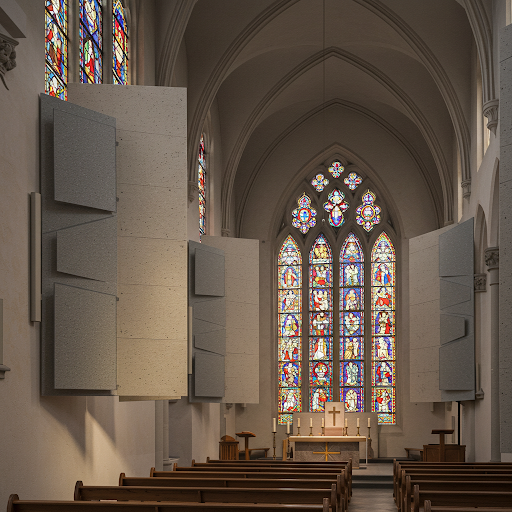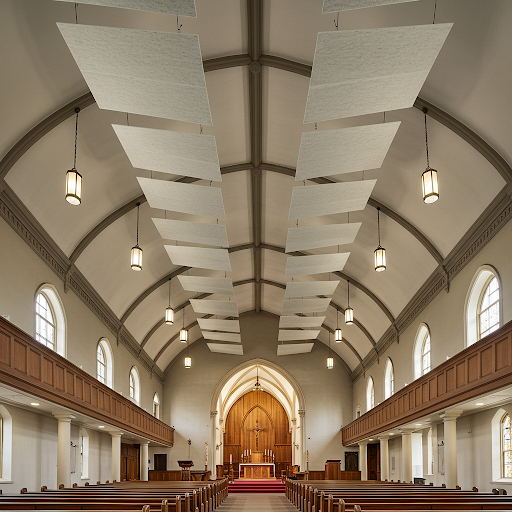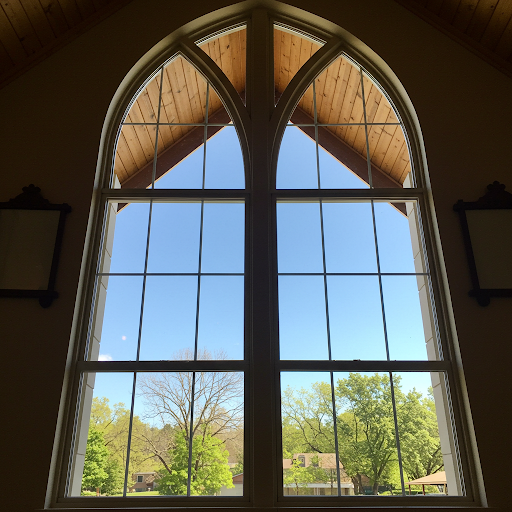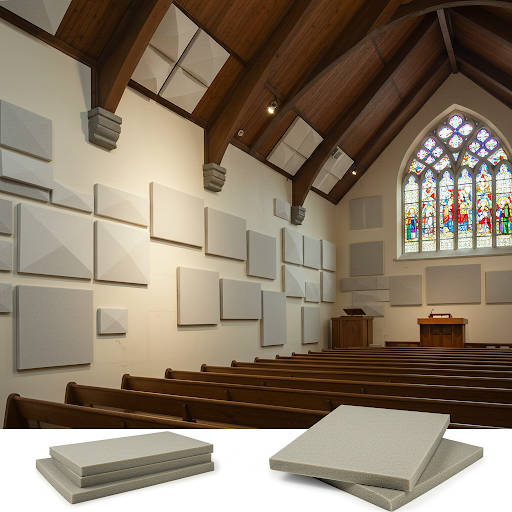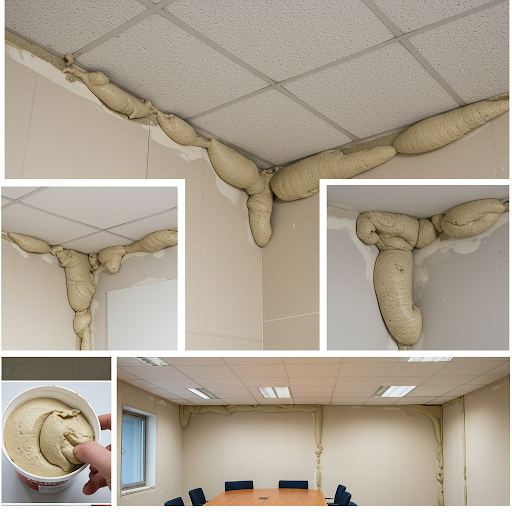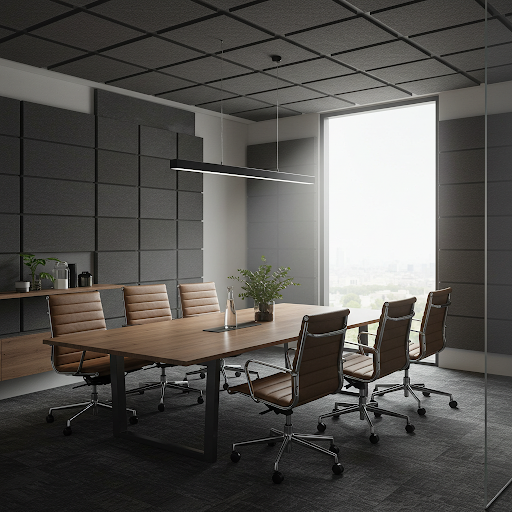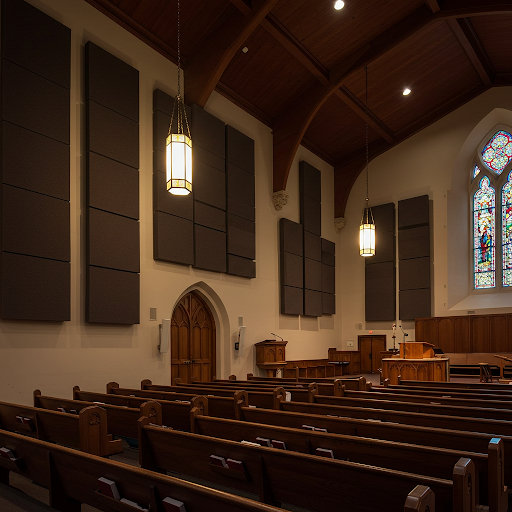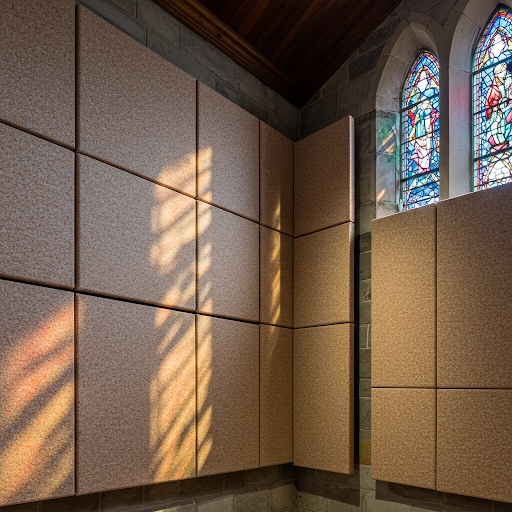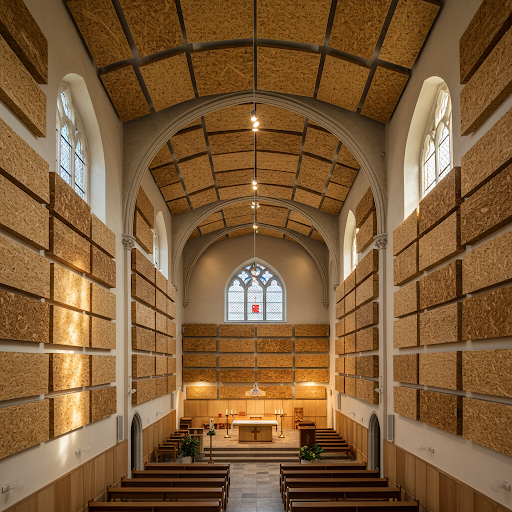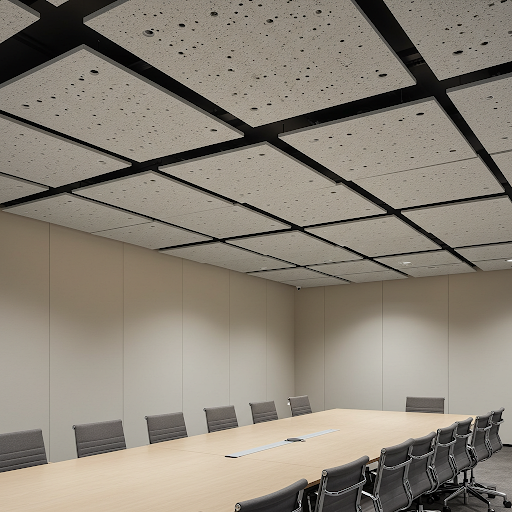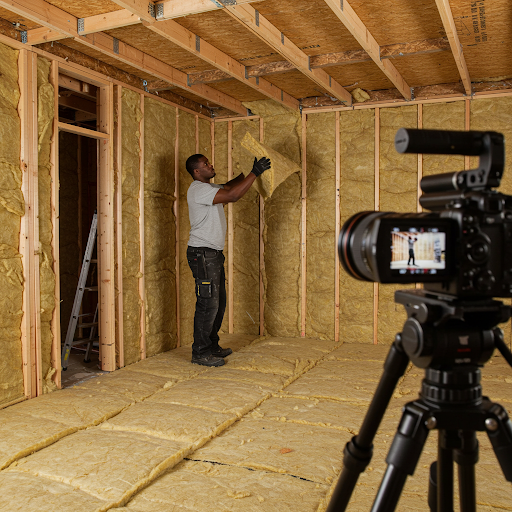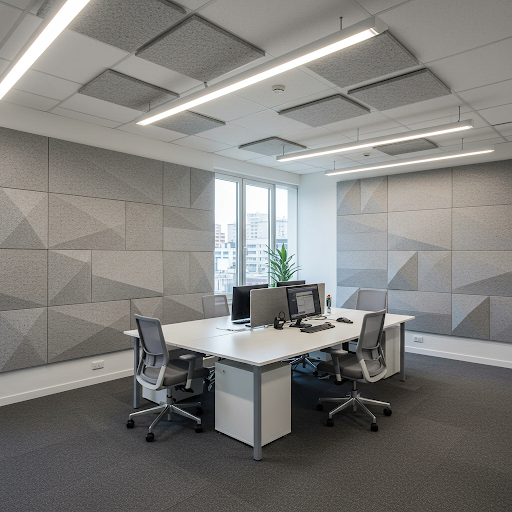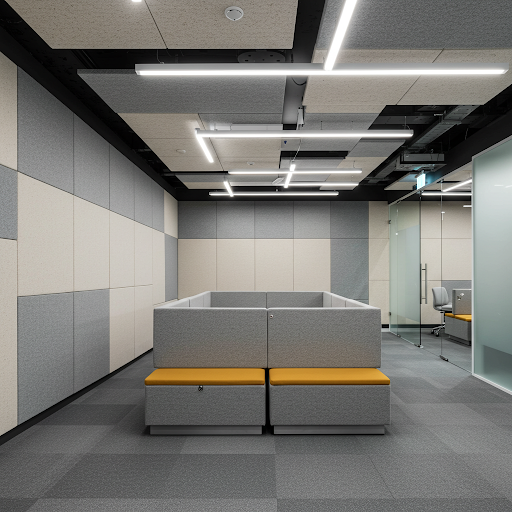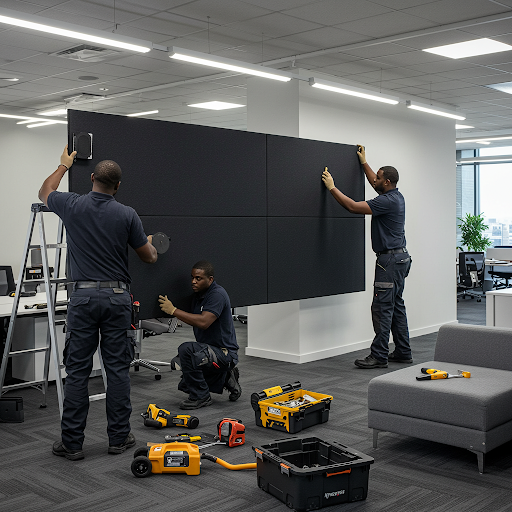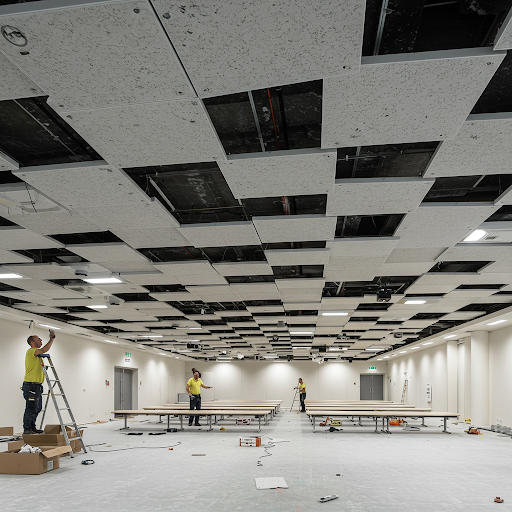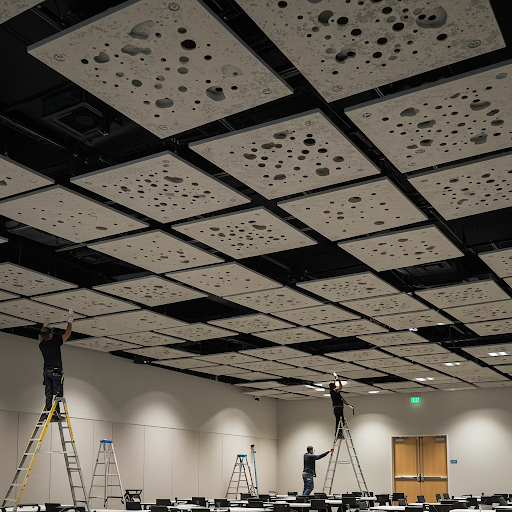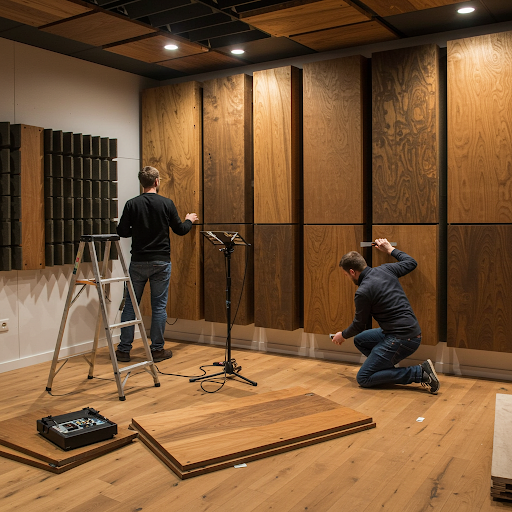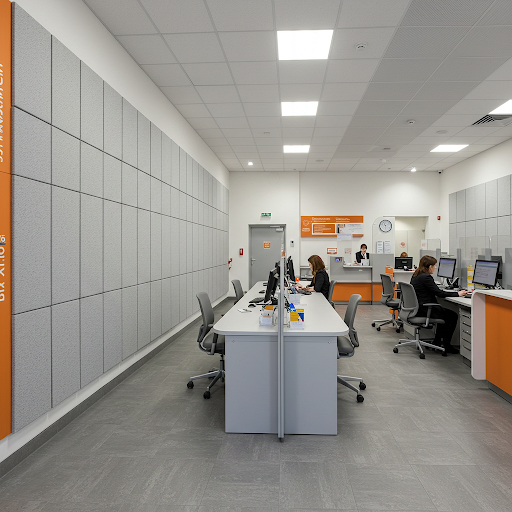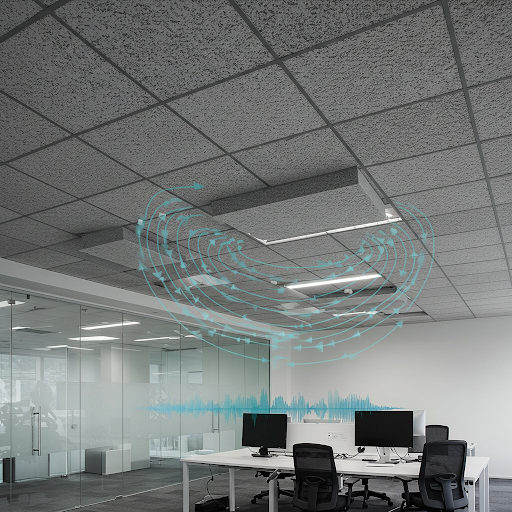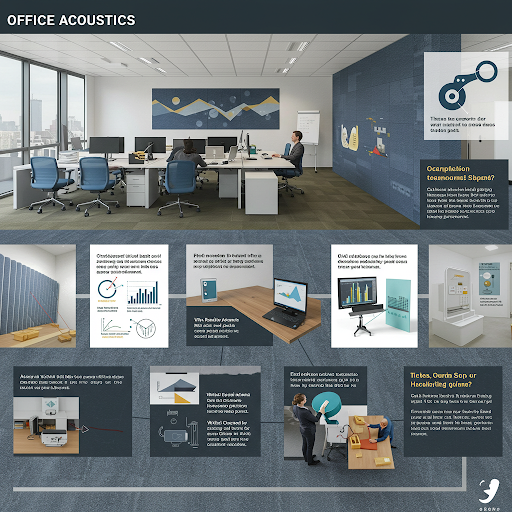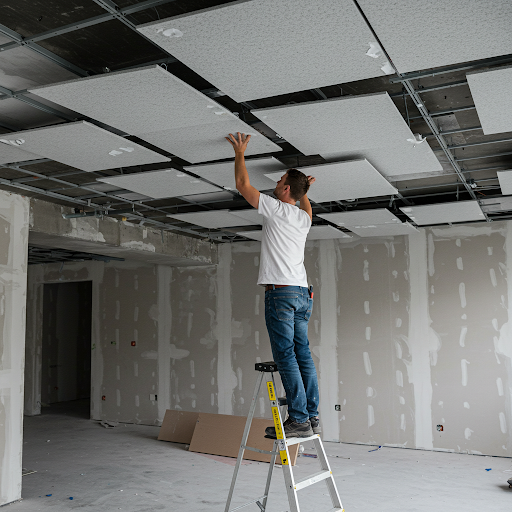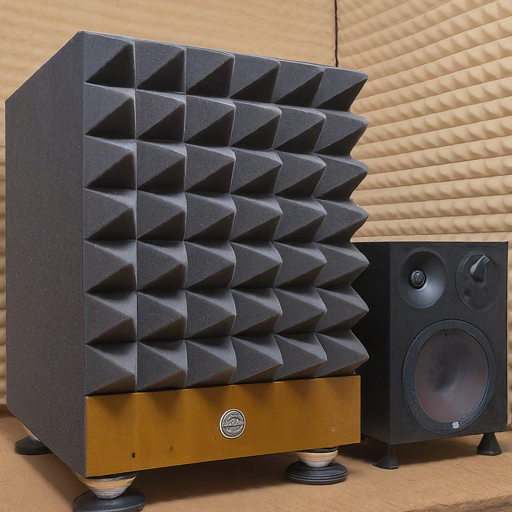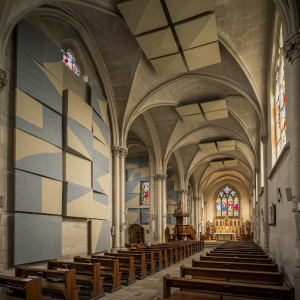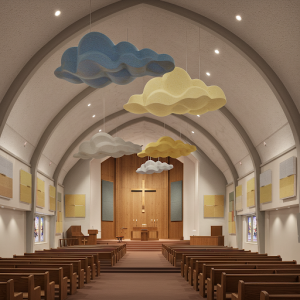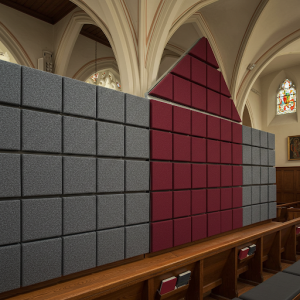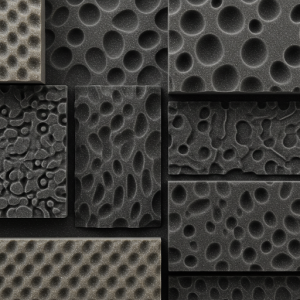Description
Acoustic panels strategically placed on ceilings and walls are crucial for controlling reverberation and flutter echo, common acoustic issues in enclosed spaces. Reverberation occurs when sound waves repeatedly bounce off hard surfaces like walls, floors, and ceilings. These reflections linger, creating a prolonged sound that can muddy speech intelligibility and music clarity. Flutter echo, a more specific type of reverberation, happens when sound waves rapidly bounce between two parallel surfaces, producing a distinct “zingy” or “metallic” sound. Both phenomena degrade the overall listening experience.
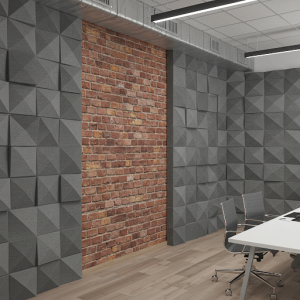
Acoustic panels, typically made of sound-absorbing materials, combat these issues.
When sound waves encounter a panel, they are absorbed rather than reflected. This reduces the overall amount of reflected sound energy within the room, thus minimizing reverberation time. By strategically placing panels on walls and ceilings – the primary surfaces involved in sound reflection – you effectively break up the paths of sound waves, preventing them from repeatedly bouncing between parallel surfaces and eliminating flutter echo. The result is a cleaner, more balanced sound with improved clarity and intelligibility, making the space more suitable for communication, music listening, or any activity where sound quality is important.
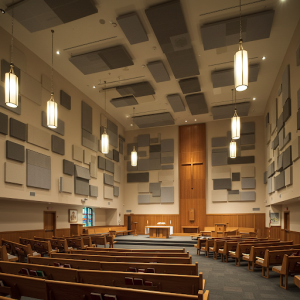
Wallpaper Kenya has been helping to create the ideal sound environment in rooms of any purpose for over 10 years.
How acoustic panels work
How do sound-absorbing panels work?
The operating mechanism of acoustic panels is based on three key processes:
- Conversion of sound energy into heat due to the friction of air against the fibers of the material
- Scattering of sound waves due to the complex internal structure
- Absorption of low-frequency vibrations through resonant systems
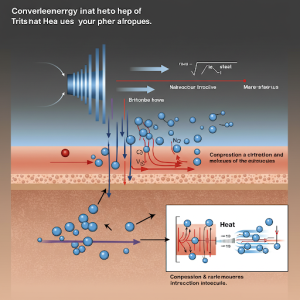 The effectiveness of acoustic panels hinges on three key processes that work in concert to manage sound within a space. Firstly, acoustic panels convert sound energy into heat through friction. These panels are often constructed from porous materials with intricate fiber networks. When sound waves encounter the panel, they force air particles to move within these fibers. This movement generates friction, and as the air particles rub against the fibers, a tiny amount of the sound energy is transformed into heat. This conversion, while small individually, becomes significant across the entire panel surface, effectively reducing the overall sound energy reflecting into the room.
The effectiveness of acoustic panels hinges on three key processes that work in concert to manage sound within a space. Firstly, acoustic panels convert sound energy into heat through friction. These panels are often constructed from porous materials with intricate fiber networks. When sound waves encounter the panel, they force air particles to move within these fibers. This movement generates friction, and as the air particles rub against the fibers, a tiny amount of the sound energy is transformed into heat. This conversion, while small individually, becomes significant across the entire panel surface, effectively reducing the overall sound energy reflecting into the room.
Secondly, specially designed acoustic panels scatter sound waves due to their complex internal structure. The irregular surfaces and varying densities within the panel cause sound waves to disperse in multiple directions. This scattering effect not only reduces the intensity of reflections but also helps to break up standing waves and flutter echoes, further improving the acoustic environment. Instead of a concentrated reflection bouncing off a flat surface, the scattered sound is diffused, creating a more even distribution of sound energy within the space. This diffusion contributes to a more balanced and natural sound, enhancing clarity and reducing unwanted echoes.
Resonant panels

Finally, some acoustic panels are designed with resonant systems to specifically target and absorb low-frequency vibrations. Low frequencies, often characterized by booming or rumbling sounds, can be particularly challenging to control.
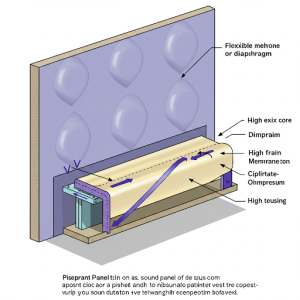 Resonant panels incorporate a flexible membrane or diaphragm that vibrates at specific low frequencies. When these low-frequency sound waves strike the panel, they cause the membrane to vibrate. This vibration absorbs the sound energy, effectively dampening the low-frequency noise. This mechanism is crucial for creating a balanced acoustic environment, as it addresses the often problematic buildup of bass frequencies that can muddy the overall sound. By combining these three processes – energy conversion through friction, sound wave scattering, and low-frequency absorption – acoustic panels provide a comprehensive solution for managing sound reflections and improving the acoustic quality of a space.
Resonant panels incorporate a flexible membrane or diaphragm that vibrates at specific low frequencies. When these low-frequency sound waves strike the panel, they cause the membrane to vibrate. This vibration absorbs the sound energy, effectively dampening the low-frequency noise. This mechanism is crucial for creating a balanced acoustic environment, as it addresses the often problematic buildup of bass frequencies that can muddy the overall sound. By combining these three processes – energy conversion through friction, sound wave scattering, and low-frequency absorption – acoustic panels provide a comprehensive solution for managing sound reflections and improving the acoustic quality of a space.
Types of noise and acoustic panel methods of dealing with them
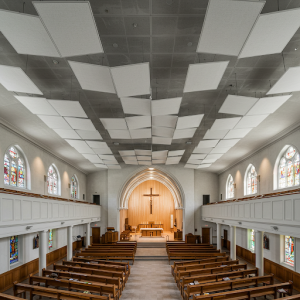 In modern spaces, we encounter four main types of noise:
In modern spaces, we encounter four main types of noise:
Airborne noise (conversations, music, household appliances)
Airborne noise, the kind generated by conversations, music, and household appliances, travels through the air as sound waves.
When sound waves encounter hard surfaces like walls and ceilings, they reflect, causing reverberation and echoes. This can significantly disrupt environments like churches, homes, or offices. Acoustic panels are designed to combat this by absorbing these sound waves. Constructed from porous materials like foam, mineral wool, or fiberglass, and often covered with fabric, they effectively trap and dissipate sound energy.
When sound waves enter the panel, the fibers within convert the sound energy into minute amounts of heat, thus reducing the reflected sound. The placement and type of acoustic panels are crucial; strategic positioning on walls and ceilings, particularly in areas of high reflection, maximizes their effectiveness.
By reducing the reflected sound, acoustic panels minimize reverberation and echoes, leading to improved speech clarity and a more comfortable auditory environment. They don’t block sound transmission like soundproofing materials, but they significantly enhance the quality of sound within a space by controlling airborne noise.
Structural noise (vibrations from engineering systems)
Acoustic panels primarily address airborne noise, not structural noise. Structural noise, like vibrations from HVAC or machinery, travels through building materials. While panels can slightly dampen some vibration-induced airborne noise, they don’t decouple structural vibrations. Solutions for structural noise involve isolating the vibration source. This includes using vibration isolation mounts, resilient channels, or floating floors to break the direct contact between the vibrating equipment and the building’s structure. Acoustic panels work to absorb the airborne sound that is created once the vibration has caused other materials to create sound.
Impact noise (footsteps, blows, falling objects)
Acoustic panels are less effective against impact noise, which is transmitted through the building’s structure. Impact noise, like footsteps or falling objects, creates vibrations that travel through floors, walls, and ceilings.
While panels can absorb the airborne sound resulting from these vibrations, they don’t prevent the vibrations themselves. To address impact noise, decoupling is essential. This involves breaking the direct contact between the impact source and the building structure. Solutions include resilient flooring underlays, floating floors, and isolation clips for walls and ceilings. Acoustic panels can then help absorb the airborne sound generated by the impact’s vibrations.
Reverberation noise (echo, room boominess)
Acoustic panels excel at mitigating reverberation noise, which encompasses echoes and room boominess.
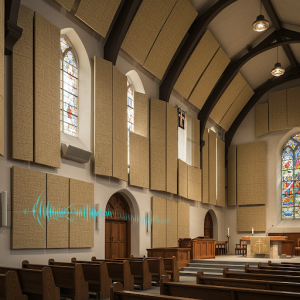
Reverberation occurs when sound waves repeatedly reflect off hard surfaces within a space, creating a prolonged sound decay. This results in a muddy, indistinct auditory experience, where speech clarity and musical fidelity suffer. Acoustic panels, made from porous materials like foam or fiberglass wrapped in fabric, absorb these sound waves, preventing them from bouncing back into the room. By strategically placing panels on walls and ceilings, particularly in areas of high sound reflection, the panels effectively reduce the duration and intensity of reverberation. This leads to a clearer, more controlled acoustic environment. The panels don’t eliminate the original sound source, but they significantly minimize the lingering echoes and resonance that contribute to room boominess. This results in improved speech intelligibility, enhanced musical clarity, and a more comfortable listening experience. The quantity and placement of the panels are crucial for optimal results, requiring careful consideration of the room’s dimensions and materials.
Types of acoustic panels
By material of manufacture
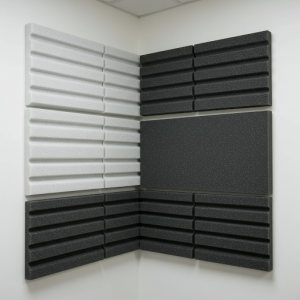
Acoustic panels vary by manufacturing material, influencing their performance and appearance. Fiberglass panels offer high absorption and are cost-effective. Acoustic foam, often polyurethane, is lightweight and suitable for home studios. Wood fiber panels, made from compressed wood strands, provide natural aesthetics and sound control. Polyester fiber panels, from recycled materials, offer eco-friendly sound absorption. Fabric-wrapped panels conceal various cores, like mineral wool, for aesthetic versatility. Each material impacts absorption coefficients, fire resistance, and durability.
Polyester fiber acoustic panels
Polyester fiber acoustic panels are a popular, eco-friendly sound absorption solution.
Made from recycled polyethylene terephthalate (PET) bottles, they offer a sustainable alternative to traditional materials. These panels are lightweight, durable, and easy to install. They provide good sound absorption across various frequencies, reducing reverberation and echoes. Available in diverse colors and thicknesses, they can be customized to fit various design aesthetics. They are also non-toxic, hypoallergenic, and resistant to mold and mildew, making them suitable for sensitive environments. Their versatility and environmental benefits make them a preferred choice for modern acoustic treatments.
Fabric acoustic panels

Fabric acoustic panels consist of a sound-absorbing core, typically fiberglass or mineral wool, wrapped in a fabric covering. This design combines acoustic performance with aesthetic versatility. The fabric layer allows for a wide range of colors, textures, and patterns, enabling panels to seamlessly integrate into any interior design. They effectively absorb sound waves, reducing reverberation and echoes. Fabric-wrapped panels are commonly used in offices, studios, and public spaces where both sound control and visual appeal are essential. Their performance depends on the core material’s density and thickness, as well as the fabric’s acoustic transparency.
Acoustic Panels Classification By design
Acoustic panels, classified by design, fall into several categories.
Flat panels are basic absorbers for walls and ceilings. Shaped panels, like wedges or pyramids, enhance absorption and diffusion. Baffles are suspended panels for high ceilings, maximizing surface area. Diffusers scatter sound, preventing echoes without absorption. Fabric-wrapped panels offer aesthetic customization. Slatted panels combine absorption and diffusion with a linear design. Ceiling clouds are horizontal suspended panels. Each design serves specific acoustic needs and aesthetic preferences
Flat panels
Flat acoustic panels are the most common and versatile type. They consist of a sound-absorbing core, often fiberglass or foam, encased in a fabric covering. Their primary function is to absorb sound waves, reducing reverberation and echoes within a space. They are typically mounted on walls or ceilings, providing a smooth, unobtrusive aesthetic. Flat panels are available in various sizes, thicknesses, and fabric colors, allowing for customization to match any interior design. Their effectiveness depends on the panel’s material, thickness, and placement. They are ideal for controlling reverberation in rooms with hard surfaces.
Embossed panels
Embossed acoustic panels feature textured surfaces, adding both visual and acoustic depth. The embossed patterns, ranging from subtle to pronounced, increase the panel’s surface area, enhancing sound absorption and diffusion. This design helps scatter sound waves, preventing harsh reflections and creating a more balanced acoustic environment. Embossed panels are often used where aesthetics are a priority, offering a decorative element alongside sound control. They come in various materials and patterns, allowing for customization to suit diverse interior designs. The texture contributes to a richer, more nuanced sound experience.
Modular systems
Modular acoustic panel systems offer flexibility and adaptability for sound control. These systems consist of interconnected panels that can be configured in various arrangements to suit specific acoustic needs and room layouts. They provide a dynamic solution for spaces requiring adjustable sound absorption and diffusion.
Modular systems often feature a framework or track system that allows for easy installation, reconfiguration, and relocation of panels. This adaptability makes them ideal for multi-purpose spaces, such as conference rooms, studios, or open-plan offices, where acoustic requirements may change. The panels themselves can be flat, shaped, or embossed, and are available in a wide range of materials and finishes, allowing for aesthetic customization. They can be mounted on walls, ceilings, or used as freestanding partitions, offering versatile sound management. The modularity also simplifies maintenance and replacement, ensuring long-term acoustic performance. The systems can be designed to create specific acoustic zones within a larger space, offering targeted sound control.
Advantages of acoustic panels
Technical advantages
All our acoustic panels meet several significant technical characteristics:
High sound absorption coefficient
- NRC (Noise Reduction Coefficient) from 0.85 to 0.95
- Effective operation in the frequency range of 125-4000 Hz
- Confirmed by test reports in accredited laboratories
Acoustic panels’ sound absorption coefficients, usually between 0 and 1, quantify how much sound they absorb. A coefficient of 0 means no sound absorption (perfect reflection), while 1 indicates complete absorption.
These coefficients vary depending on the panel’s material, thickness, and sound frequency. Higher coefficients mean better absorption, reducing reverberation and echo.
Manufacturers provide these coefficients for different frequencies, giving a comprehensive picture of the panel’s performance.
This data helps choose the right panel for specific acoustic needs in a room.
Fire safety
- Fire hazard class KM1
- Flammability group G1
- Certificates of conformity
Environmental safety
When considering the environmental safety of acoustic panels, several factors are paramount, especially regarding their application in sensitive environments like children’s institutions. Firstly, the use of hypoallergenic materials is crucial. This ensures that individuals with allergies or sensitivities are not adversely affected by the panels. Common materials like certain types of mineral wool or recycled textiles are often chosen for their low allergenic potential.
Secondly, the absence of harmful emissions is vital. Acoustic panels should be manufactured without volatile organic compounds (VOCs) or other toxic substances that can leach into the indoor air. Certifications like GREENGUARD Gold ensure that products meet stringent emission standards, making them safe for indoor use, particularly in spaces occupied by children.
The possibility of application in children’s institutions necessitates adherence to rigorous safety standards. Materials should be non-toxic, fire-resistant, and free from substances that could pose a health risk. This includes avoiding materials that might release fibers or dust that can be inhaled. Durable and easily cleanable surfaces are also essential in environments where hygiene is a priority.
Durability
- Service life is more than 15 years
- Maintains properties at humidity levels up to 90%
- UV resistance
Aesthetic benefits
Unlike standard soundproofing solutions, our acoustic panels become an interior decoration:
A variety of design solutions
- More than 50 standard colors and textures
- Possibility of creating an individual design
- Integration with any interior style
Modularity of design
- Creating unique geometric compositions
- A combination of different types of panels
- Easy replacement of individual elements
Premium finishing materials
- Natural fabrics and veneers
- Eco-friendly paints and impregnations
- Special wear-resistant coatings

